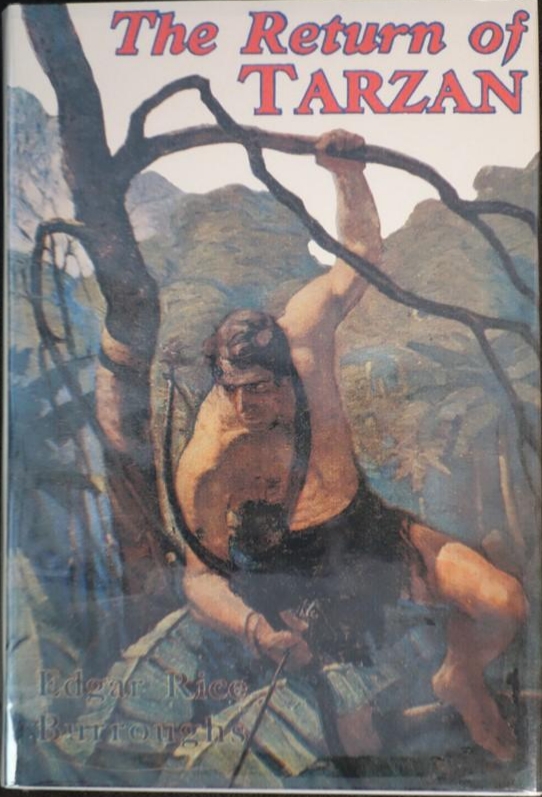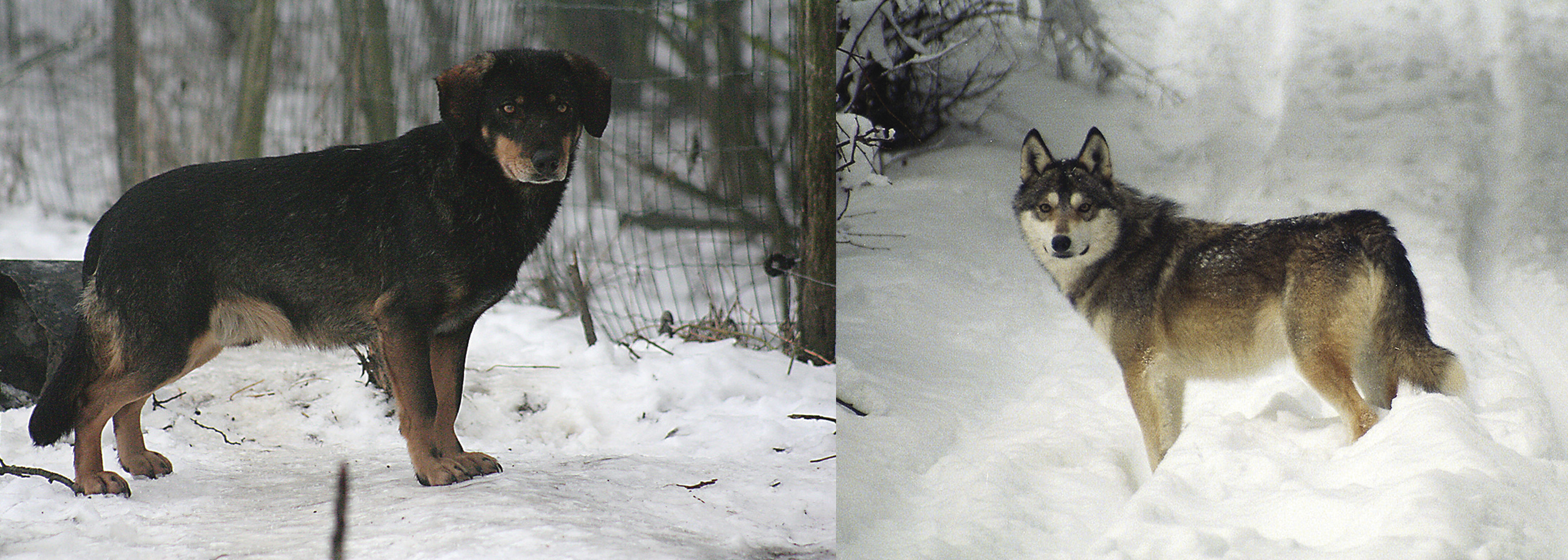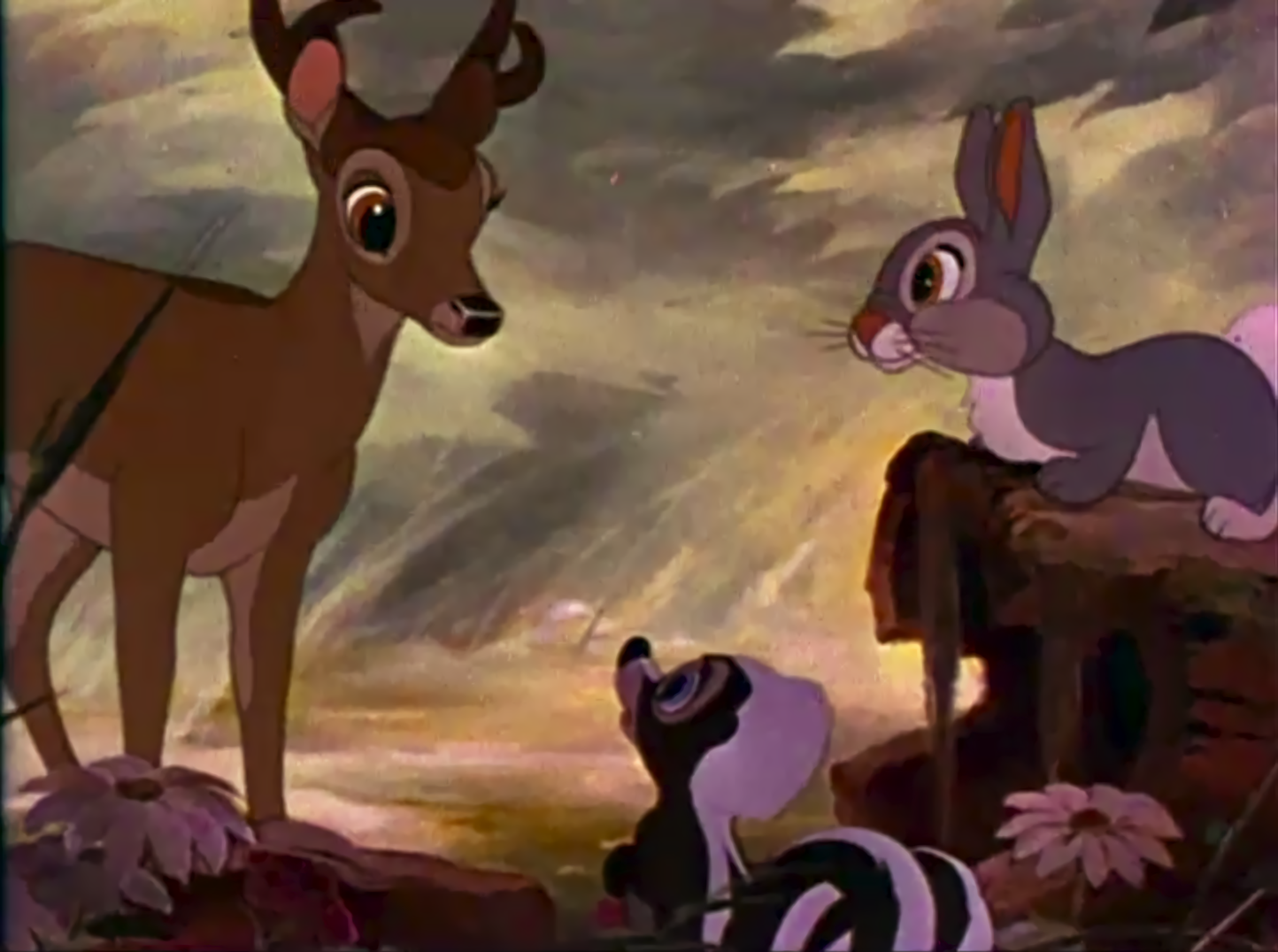|
Bambi's Children
''Bambi's Children: The Story of a Forest Family'' (german: Bambis Kinder: Eine Familie im Walde) is a 1939 coming-of-age novel written by Austrian author Felix Salten as a sequel to his 1923 work ''Bambi, a Life in the Woods''. Background The sequel to ''Bambi'' follows the lives of the twin children of Bambi and his mate Faline as they grow from fawns to young adults. Salten wrote the sequel while living in exile in Switzerland after being forced to flee Nazi-occupied Austria as he was of Jewish heritage. Written in German, the novel was first published in English in the United States in 1939 by Bobbs-Merrill. It was not published in German until the following year. Perri, a squirrel character from one of Salten's earlier novels, makes several appearances in the book. The models for Geno and Gurri were Felix Salten's own children, Paul who was careful and timid, and Anna Katharina, who was merry and optimistic. Salten also included himself as the responsible and humane hunter in ... [...More Info...] [...Related Items...] OR: [Wikipedia] [Google] [Baidu] |
Barthold Fles
Barthold "Bart" Fles (February 7, 1902 – December 19, 1989) was a Dutch-American literary agent, author, translator, editor and publisher. Among his many clients were Elias Canetti, Raymond Loewy, Heinrich Mann, Joseph Roth, Felix Salten, Ignazio Silone, Bruno Walter and Arnold Zweig. Early life and education Barthold Fles was born in Amsterdam into an assimilating Jewish family. His father, Louis Fles, was a successful businessman and an activist against religion. Barthold had a tense relationship with his father, who wanted him into his business, while the young Fles was mostly interested in reading. Barthold read in Dutch, German, English, and French, anytime and at a tremendous pace. He did study business at a vocational school and found employment at De Lange publishers. In 1923 he left for the United States. In New York Fles found temporary employment as a violinist, painting apartments, selling vacuum cleaners and working for publishers. Literary agency In 1933, ... [...More Info...] [...Related Items...] OR: [Wikipedia] [Google] [Baidu] |
Dutch Language
Dutch ( ) is a West Germanic language spoken by about 25 million people as a first language and 5 million as a second language. It is the third most widely spoken Germanic language The Germanic languages are a branch of the Indo-European language family spoken natively by a population of about 515 million people mainly in Europe, North America, Oceania and Southern Africa. The most widely spoken Germanic language, E ..., after its close relatives German language, German and English language, English. ''Afrikaans'' is a separate but somewhat Mutual intelligibility, mutually intelligible daughter languageAfrikaans is a daughter language of Dutch; see , , , , , . Afrikaans was historically called Cape Dutch; see , , , , , . Afrikaans is rooted in 17th-century dialects of Dutch; see , , , . Afrikaans is variously described as a creole, a partially creolised language, or a deviant variety of Dutch; see . spoken, to some degree, by at least 16 million people, mainly in Sou ... [...More Info...] [...Related Items...] OR: [Wikipedia] [Google] [Baidu] |
Children's Novels About Animals
A child ( : children) is a human being between the stages of birth and puberty, or between the developmental period of infancy and puberty. The legal definition of ''child'' generally refers to a minor, otherwise known as a person younger than the age of majority. Children generally have fewer rights and responsibilities than adults. They are classed as unable to make serious decisions. ''Child'' may also describe a relationship with a parent (such as sons and daughters of any age) or, metaphorically, an authority figure, or signify group membership in a clan, tribe, or religion; it can also signify being strongly affected by a specific time, place, or circumstance, as in "a child of nature" or "a child of the Sixties." Biological, legal and social definitions In the biological sciences, a child is usually defined as a person between birth and puberty, or between the developmental period of infancy and puberty. Legally, the term ''child'' may refer to anyone below the ... [...More Info...] [...Related Items...] OR: [Wikipedia] [Google] [Baidu] |
Twins In Fiction
Twins are two offspring produced by the same pregnancy.MedicineNet > Definition of TwinLast Editorial Review: 19 June 2000 Twins can be either ''monozygotic'' ('identical'), meaning that they develop from one zygote, which splits and forms two embryos, or ''dizygotic'' ('non-identical' or 'fraternal'), meaning that each twin develops from a separate egg and each egg is fertilized by its own sperm cell. Since identical twins develop from one zygote, they will share the same sex, while fraternal twins may or may not. In rare cases twins can have the same mother and different fathers (heteropaternal superfecundation). In contrast, a fetus that develops alone in the womb (the much more common case, in humans) is called a ''singleton'', and the general term for one offspring of a multiple birth is a ''multiple''. Unrelated look-alikes whose resemblance parallels that of twins are referred to as doppelgängers. Statistics The human twin birth rate in the United States rose 76% fr ... [...More Info...] [...Related Items...] OR: [Wikipedia] [Google] [Baidu] |
Sequel Novels
A sequel is a work of literature, film, theatre, television, music or video game that continues the story of, or expands upon, some earlier work. In the common context of a narrative work of fiction, a sequel portrays events set in the same fictional universe as an earlier work, usually chronologically following the events of that work. In many cases, the sequel continues elements of the original story, often with the same characters and settings. A sequel can lead to a series, in which key elements appear repeatedly. Although the difference between more than one sequel and a series is somewhat arbitrary, it is clear that some media franchises have enough sequels to become a series, whether originally planned as such or not. Sequels are attractive to creators and to publishers because there is less risk involved in returning to a story with known popularity rather than developing new and untested characters and settings. Audiences are sometimes eager for more stories abo ... [...More Info...] [...Related Items...] OR: [Wikipedia] [Google] [Baidu] |
Environmental Fiction Books
A biophysical environment is a biotic and abiotic surrounding of an organism or population, and consequently includes the factors that have an influence in their survival, development, and evolution. A biophysical environment can vary in scale from microscopic to global in extent. It can also be subdivided according to its attributes. Examples include the marine environment, the atmospheric environment and the terrestrial environment. The number of biophysical environments is countless, given that each living organism has its own environment. The term ''environment'' can refer to a singular global environment in relation to humanity, or a local biophysical environment, e.g. the UK's Environment Agency. Life-environment interaction All life that has survived must have adapted to the conditions of its environment. Temperature, light, humidity, soil nutrients, etc., all influence the species within an environment. However, life in turn modifies, in various forms, its conditions. ... [...More Info...] [...Related Items...] OR: [Wikipedia] [Google] [Baidu] |
1939 German-language Novels
This year also marks the start of the Second World War, the largest and deadliest conflict in human history. Events Below, the events of World War II have the "WWII" prefix. January * January 1 ** Third Reich *** Jews are forbidden to work with Germans. *** The Youth Protection Act was passed on April 30, 1938 and the Working Hours Regulations came into effect. *** The Jews name change decree has gone into effect. ** The rest of the world *** In Spain, it becomes a duty of all young women under 25 to complete compulsory work service for one year. *** First edition of the Vienna New Year's Concert. *** The company of technology and manufacturing scientific instruments Hewlett-Packard, was founded in a garage in Palo Alto, California, by William (Bill) Hewlett and David Packard. This garage is now considered the birthplace of Silicon Valley. *** Sydney, in Australia, records temperature of 45 ˚C, the highest record for the city. *** Philipp Etter took over as Swi ... [...More Info...] [...Related Items...] OR: [Wikipedia] [Google] [Baidu] |
The New York Times
''The New York Times'' (''the Times'', ''NYT'', or the Gray Lady) is a daily newspaper based in New York City with a worldwide readership reported in 2020 to comprise a declining 840,000 paid print subscribers, and a growing 6 million paid digital media, digital subscribers. It also is a producer of popular podcasts such as ''The Daily (podcast), The Daily''. Founded in 1851 by Henry Jarvis Raymond and George Jones (publisher), George Jones, it was initially published by Raymond, Jones & Company. The ''Times'' has won List of Pulitzer Prizes awarded to The New York Times, 132 Pulitzer Prizes, the most of any newspaper, and has long been regarded as a national "newspaper of record". For print it is ranked List of newspapers by circulation, 18th in the world by circulation and List of newspapers in the United States, 3rd in the U.S. The paper is owned by the New York Times Company, which is Public company, publicly traded. It has been governed by the Sulzberger family since 189 ... [...More Info...] [...Related Items...] OR: [Wikipedia] [Google] [Baidu] |
Wolfdog
A wolfdog is a canine produced by the mating of a domestic dog (''Canis familiaris'') with a gray wolf (''Canis lupus''), eastern wolf (''Canis lycaon''), red wolf (''Canis rufus''), or Ethiopian wolf (''Canis simensis'') to produce a hybrid. Admixture There are a range of experts who believe that they can tell the difference between a wolf, a dog, and a wolfdog, but they have been proven to be incorrect when providing their evidence before courts of law. Admixture between domestic dogs and other subspecies of gray wolves are the most common wolfdogs since dogs and gray wolves are considered the same species, are genetically very close and have shared vast portions of their ranges for millennia. Such admixture in the wild have been detected in many populations scattered throughout Europe and North America, usually occurring in areas where wolf populations have declined from human impacts and persecutions. At the same time, wolfdogs are also often bred in captivity for ... [...More Info...] [...Related Items...] OR: [Wikipedia] [Google] [Baidu] |
European Eagle-owl
The Eurasian eagle-owl (''Bubo bubo'') is a species of eagle-owl that resides in much of Eurasia. It is also called the Uhu and it is occasionally abbreviated to just the eagle-owl in Europe. It is one of the largest species of owl, and females can grow to a total length of 75 cm (30 in), with a wingspan of 188 cm (6 ft 2 in), with males being slightly smaller.''Owls of the World: A Photographic Guide'' by Mikkola, H. Firefly Books (2012), This bird has distinctive ear tufts, with upper parts that are mottled with darker blackish colouring and tawny. The wings and tail are barred. The underparts are a variably hued buff, streaked with darker colouring. The facial disc is not very defined and the orange eyes are distinctive.Penteriani, V., & del Mar Delgado, M. (2019). ''The eagle owl''. Bloomsbury Publishing. Eurasian eagle-owls are found in many habitats, but are mostly birds of mountainous regions or other rocky areas, often those near varied wood ... [...More Info...] [...Related Items...] OR: [Wikipedia] [Google] [Baidu] |
Bambi (character)
Bambi is the title character in Felix Salten's 1923 novel, ''Bambi, a Life in the Woods'', and its sequel, '' Bambi's Children'', as well as the Disney animated films ''Bambi'' and ''Bambi II''. The character also appears in Salten's novels ''Perri'' and '' Fifteen Rabbits''. Early German-language editions of the novels were illustrated by Hans Bertle. In the films, Bambi's species was changed from a roe deer to a white-tailed deer, which would be more familiar to American audiences. His image is a Disney icon, comparable to the recognition of Jiminy Cricket or Tinkerbell, and he is even shown on Disney stock certificates. He appears as a summon in the video game ''Kingdom Hearts'', and is a playable character in '' Disney Magic Kingdoms''. He is one of the guests in the animated television series '' House of Mouse''. He also makes cameos in '' No Hunting'' (1955), ''Who Framed Roger Rabbit'' (1988), '' The Lion King 1½'' (2004), and '' Chip 'n Dale: Rescue Rangers'' (2022). ... [...More Info...] [...Related Items...] OR: [Wikipedia] [Google] [Baidu] |
Faline
''Bambi, a Life in the Woods'' (German title: ''Bambi: Eine Lebensgeschichte aus dem Walde'') is a 1923 Austrian coming-of-age novel written by Felix Salten and originally published in Berlin by Ullstein Verlag. The novel traces the life of Bambi, a male roe deer, from his birth through childhood, the loss of his mother, the finding of a mate, the lessons he learns from his father, and the experience he gains about the dangers posed by human hunters in the forest. An English translation by Whittaker Chambers was published in North America by Simon & Schuster in 1928, and the novel has since been translated and published in over thirty languages around the world. Salten published a sequel, ''Bambi's Children'', in 1939. The novel was well received by critics and is considered a classic, as well as one of the first environmental novels. It was adapted into a theatrical animated film, ''Bambi'', by Walt Disney Productions in 1942, as well as two Russian live-action adaptations in 19 ... [...More Info...] [...Related Items...] OR: [Wikipedia] [Google] [Baidu] |



.jpg)
.png)

.jpg)

